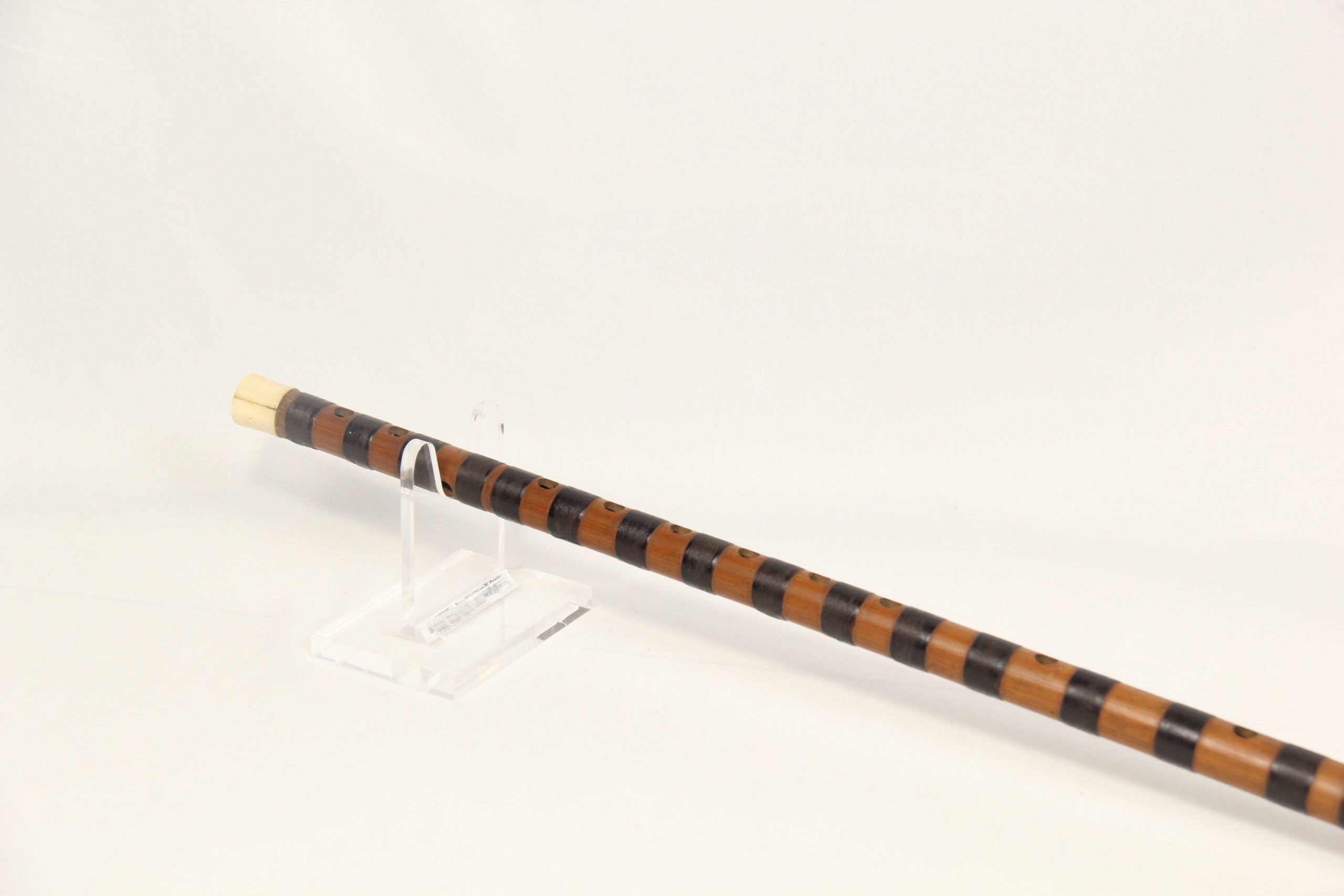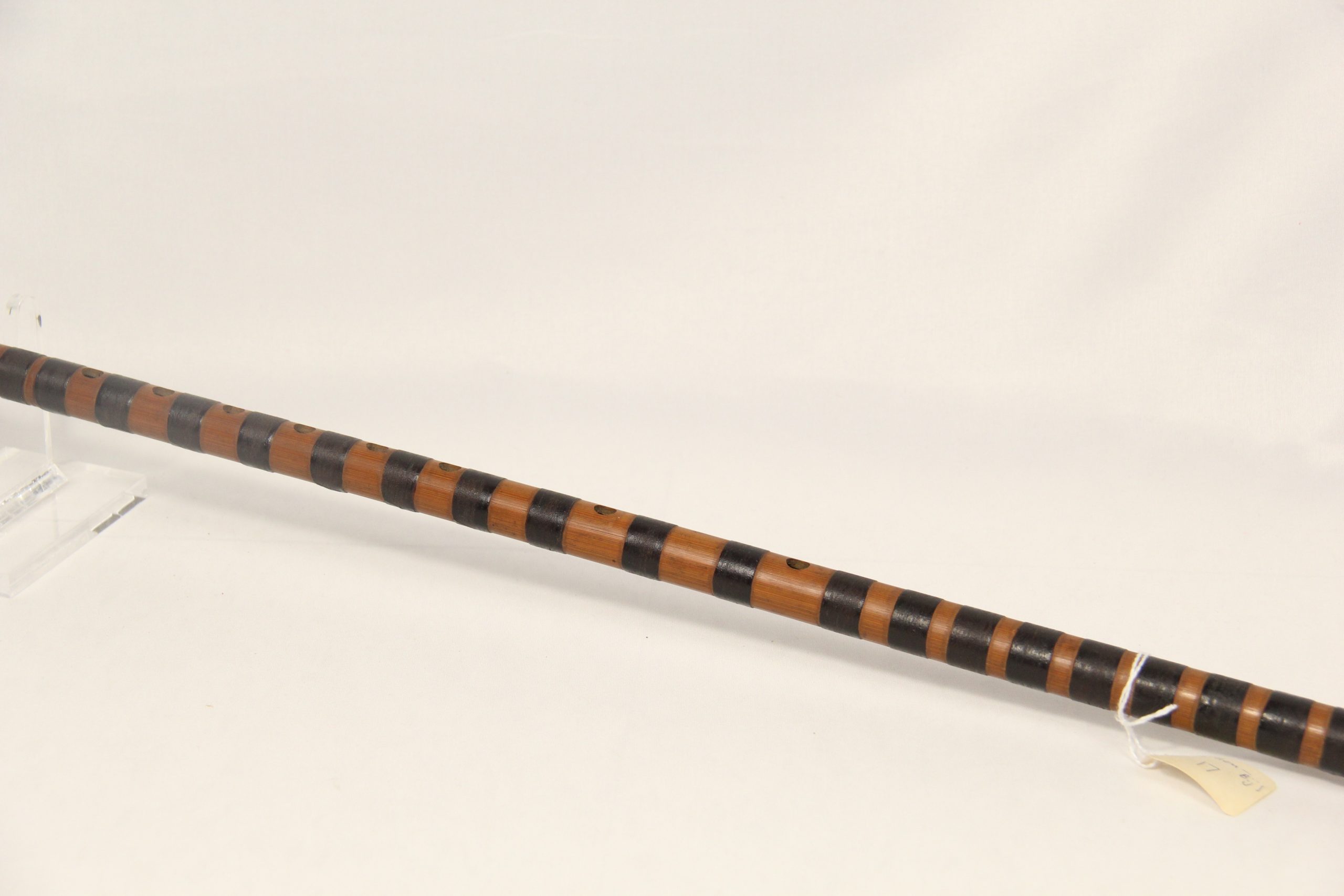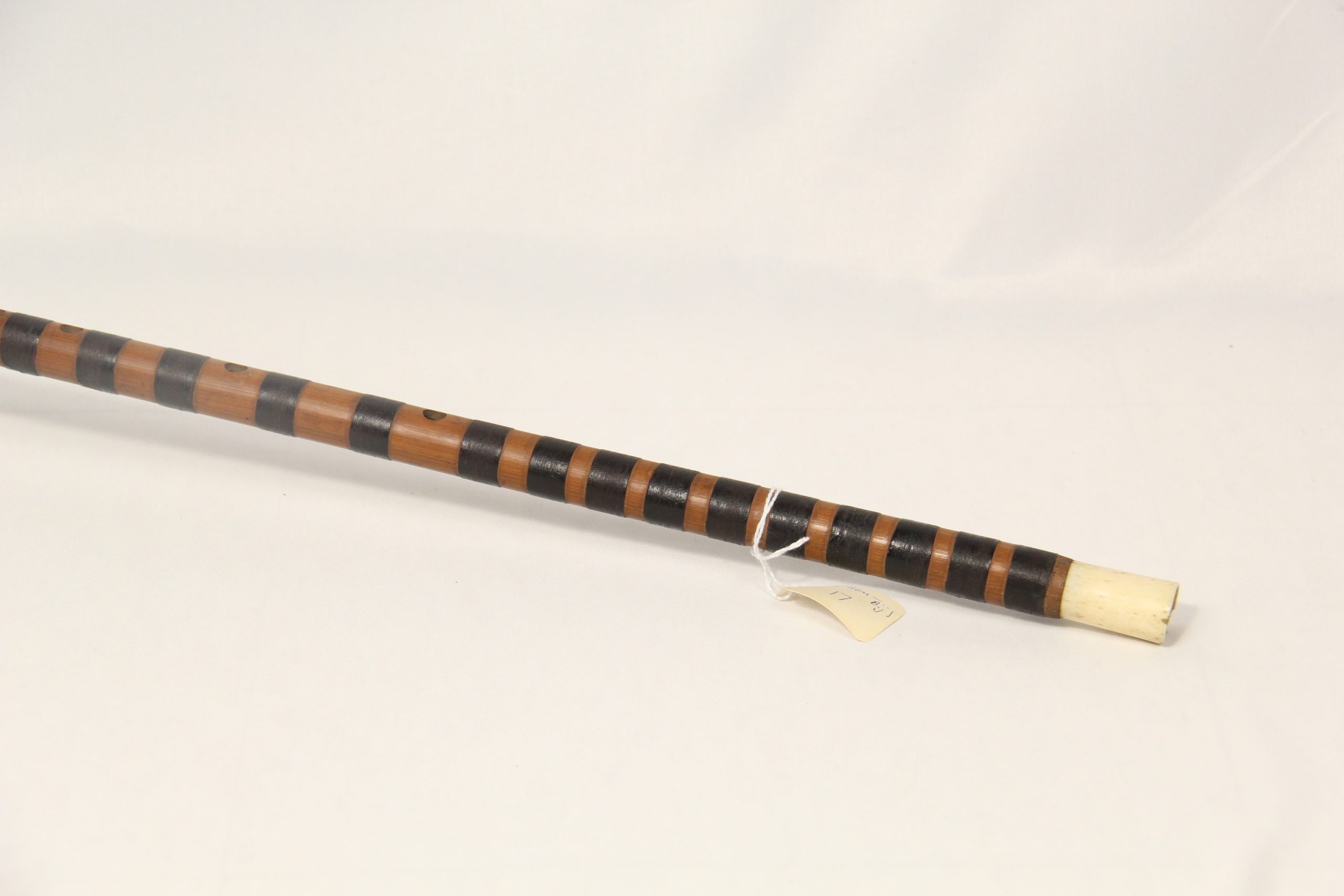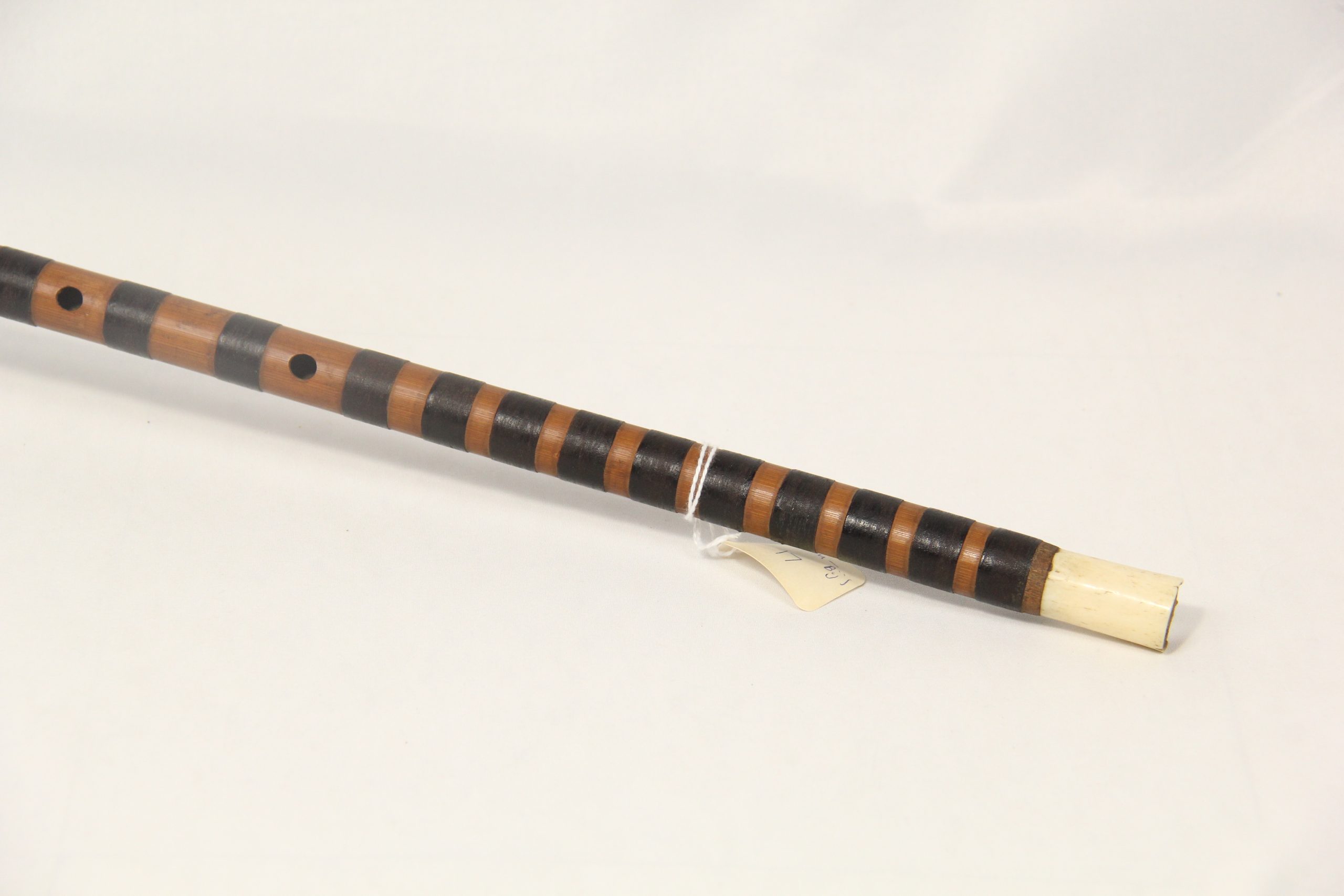Dízi (笛子)
The 笛子 Dí zi, or Chinese Transverse Flute, is a major Chinese musical instrument that is widely used in many genres of Chinese folk music, Chinese opera, as well as the modern Chinese orchestra. It’s portability and simple production process has lent to its popularity in Chinese music. It is sometimes known as the di 笛 or héngdi 横笛 (horizontal flute), and has varieties including Qudi (曲笛), Bangdi (梆笛), and Xindi (新笛).
Both 笛 and 箫 have the radical of bamboo 竹 because they’re generally made with bamboo. Most dizi are made of bamboo, which explains why dizi are sometimes known by simple names such as Chinese bamboo flute – note, the classification “bamboo” resembles the Western classification “woodwind”.
The dizi is blown like the flute traversiere or German flute. It is generally provided with ten finger holes and two mouth holes. One of the mouth holes is situated nearer to the center of the tube than the other, and is covered with a film when not used. By means of this second mouth-hole a higher pitch is attainable. Two of the finger holes are also covered with a film so that only the pentatonic intervals are producible. When all the finger holes are open the order of intervals is diatonic. (“Transverse Flute (Ti-Tzu)” 2020)

Sources
“Transverse Flute (Ti-Tzu).” 2020. Smithsonian Institution. 2020. https://www.si.edu/object/transverse-flute-ti-tzu:nmnhanthropology_8468295.
“Oldest Musical Instruments Dated.” 2022. Archive.org. 2022. https://web.archive.org/web/20160114055016/https://www.bnl.gov/bnlweb/pubaf/pr/1999/bnlpr092299.html.
Anne, Laura. 2022. “Jiahu (Ca. 7000–5700 B.C.) | Essay | the Metropolitan Museum of Art | Heilbrunn Timeline of Art History.” The Met’s Heilbrunn Timeline of Art History. 2022. https://www.metmuseum.org/toah/hd/jiah/hd_jiah.htm.
“Di | Musical Instrument | Britannica.” 2022. In Encyclopædia Britannica. https://www.britannica.com/art/di.
Goodman, Howard L. Xun Xu and the Politics of Precision in Third-Century AD China. Leiden: Brill, 2010.
“2nd International E-Conference on Studies in Humanities and Social Sciences: Conference Proceedings.” 2018, December. https://doi.org/10.32591/coas.e-conf.02.
- Beyond the May Fourth Paradigm: In Search of Chinese Modernity. United States, Lexington Books/Rowman & Littlefied, 2008.
- 陳正生 (22 October 2001). 談談民族管樂器聽覺訓練在演奏中的作用 (in Chinese).
Lau, Frederick. Music in China: Experiencing Music, Expressing Culture. New York: Oxford University Press, 2008.







